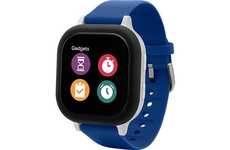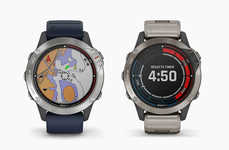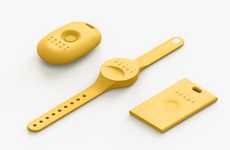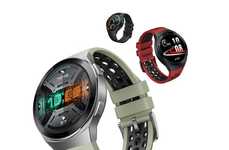

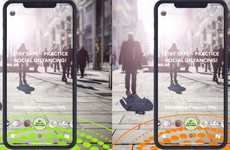

Brands make consumers more mindful of habits that could be harmful because of COVID-19
Trend - The COVID-19 pandemic has resulted in brands promoting awareness for the sake of public health--and one of the crucial ways this is being done is through the promotion of avoiding touch. Through updated services or promotional campaigns, some brands are aiming to reduce how much people touch others, public spaces, and their faces--all in order to slow the spread of the virus.
Insight - The drastic lifestyle changes that people around the world have had to quickly adjust to include even more than job-losses or staying at home. Even the smallest, most ingrained habits require change in order to slow the spread of COVID-19. Habits that tend to be second nature to people, like face-touching, require constant reminders in order for consumers to be able to break out of them.
Insight - The drastic lifestyle changes that people around the world have had to quickly adjust to include even more than job-losses or staying at home. Even the smallest, most ingrained habits require change in order to slow the spread of COVID-19. Habits that tend to be second nature to people, like face-touching, require constant reminders in order for consumers to be able to break out of them.
Workshop Question - How is your brand raising awareness for public safety?
Trend Themes
1. Promotion of Touchless Interactions - Brands and industries are investing in touchless payment, door handles, and wearables to minimize physical contact and continue essential services and hygiene practices.
2. Augmented Reality Collaboration - AR technology is being harnessed by companies to create interactive experiences to promote public health and safety, as seen in Snapchats collaboration with the WHO lenses.
3. Pandemic-prompted Creativity - The COVID-19 pandemic has sparked creativity and rethinking of existing designs, giving rise to innovations such as hands-free door handles and face-touching wearables.
Industry Implications
1. Retail and Banking - With the increase in consumer preferences for touchless payment systems, industries like retail and banking must continue to develop and innovate these systems.
2. Healthcare and Wellness - Wearable technology like Immutouch is a disruptive innovation for the healthcare and wellness industry as the trend of self-monitoring health habits continue to increase.
3. Design and Technology - The use of 3D-printing in the creation of hands-free door handles illustrates the convergence of design and technology to innovate and adapt in response to changing environments.

